Your Guide to 2N4403 Transistors: How to Use?
2024-10-29
769
Catalog

Overview of the 2N4403 Transistor
The 2N4403 is a versatile component celebrated for its efficiency in low-power switching applications. This transistor is appreciated for its cost-effectiveness and straightforward design, making it appealing for circuits where simplicity aligns with budget considerations. Often embodying reliability, it serves as a precise switch in low-power scenarios.
2N4403 Pinout

2N4403 CAD Model

Exploring 2N4403 Transistor
The 2N4403 stands out as a flexible bipolar junction transistor (BJT) frequently incorporated in diverse electronic circuits due to its reliable performance. It's especially skilled in managing a wide array of tasks, from straightforward switching functions to more sophisticated amplification processes. This wide-ranging effectiveness emphasizes its value across multiple applications.
In various switching setups, the 2N4403 proves its worth by effectively controlling devices like small motors. It functions as a switch, with the regulation of current flow taking center stage. To manage the base current and protect the transistor from over-voltage risks, a 10K resistor is carefully positioned. While not overemphasized, this kind of preventive approach helps maintain circuit integrity and ensures sustainable performance over extended periods.
The introduction of a 1K resistor to guide the current flow between the base and ground is a common practice. This arrangement is effective in stabilizing the circuit, mitigating potential stress on the transistor, and enhancing energy efficiency. With a thoughtful choice and arrangement of resistors, circuits can reach a harmonious state, balancing power usage with reliability in operation.
Functionality of the 2N4403 Transistor
Intrinsic Behavior
The PNP 2N4403 transistor operates efficiently when current exits its base, enabling activation. Initially, it possesses elevated resistance, hindering current flow. When a positive voltage is applied to the base, leakage current increases, allowing the supply voltage to propagate through the transistor. By grounding the base, sufficient current flows, energizing devices such as motors.
Switching Dynamics
To switch the 2N4403 on, grounding the base is required. This action decreases the base-emitter voltage, permitting conduction and facilitating current flow across the collector-emitter path. This effectively controls motor operation, illustrating its skill in switching tasks.
Operational Strategies
In realistic applications, calculating base current precisely is required for stable transistor function, avoiding potential damage. Implementing a resistor to moderate base current is a standard strategy to manage transistor activity. Maintaining this delicate balance promotes enhanced performance and extends the device's lifespan.
Application Techniques
Utilizing a diode across the load offers protection against back EMF, a frequent challenge when dealing with inductive loads like motors. This straightforward addition can effectively avert circuit harm, pointing out the role of protective strategies in circuit design.
Prolonged Performance and Stability with the 2N4403 Transistor
To achieve enduring functionality and reliability in circuits using the 2N4403 transistor, it's required to stay within its specified safety margins.
Staying beneath a load current of 600mA is advisable. Surpassing this threshold may result in excessive heat, which could harm the transistor. Likewise, ensure the operating voltage is below 40V DC. By observing these limits, you not only prevent immediate damage but also extend the component's life.
You can integrate a safety margin when designing circuits, keeping values well under the maximum. This practice mitigates risks from potential fluctuations in current or voltage that might undermine component stability.
Choosing the right base resistor is key to protecting the transistor. It manages the base current, maintaining it within secure limits to avert undue pressure on the device. Consider the desired collector current and the transistor's DC current to gain helps in calculating an optimal base resistor. This thoughtful approach acts as a guard against excessive currents, reducing the risk of early failure.
Equivalent Models for 2N4403
When selecting substitutes for the 2N4403 transistor, multiple considerations can help ensure the compatibility within electronic circuits. Several alternatives
• SS9012
• 2N3906
• 2N2907
• BC528
• ZTX550
• MPS2907
• PN2905
• BC878
• BC880
Exploring the Role of Complementary NPN Transistors
The 2N4401 serves as the NPN counterpart to the PNP 2N4403, creating a complementary pair prevalent in numerous electronic circuits. Together, these transistors enhance the circuit’s capacity to amplify faint signals by efficiently increasing current or voltage. This is effective in crafting amplifiers, especially in audio contexts where sound quality and efficiency are prioritized. By diving into this complementary dynamic, one can gain profound insights into the construction of push-pull amplifiers, which use NPN and PNP elements to reduce distortion.
Known for its proficiency in switching and amplifying electrical power, the 2N4401 excels in diverse applications. It manages up to 600 mA of current, typically handling low to medium power demands. These attributes make it adept at generating clear, amplified signals efficiently. Practical experiences highlight the necessity of managing heat dissipation, as overheating can drastically impact the performance and reliability of these transistors in actual applications.
2N4403 Package

2N4403 Specifications
|
Parameter |
Value |
|
Type |
PNP Transistor |
|
Factory Lead Time |
8 Weeks |
|
Package / Case |
TO-92 |
|
Number of Elements |
1 |
|
hFE/Min |
30 |
|
Published |
2012 |
|
Prefix Code |
No |
|
Number of Terminations |
3 |
|
Terminal Finish |
Matte Tin (Sn) |
|
Min Operating Temperature |
-65°C |
|
Terminal Position |
BOTTOM |
|
Time@Peak Reflow Temperature-Max (s) |
NOT SPECIFIED |
|
J-STD-020 Code |
0-PBECYT3 |
|
Polarity |
PNP |
|
Transistor Application |
SWITCHING |
|
Collector Emitter Voltage (VCEO) |
750mV |
|
Transition Frequency |
200MHz |
|
Collector Base Voltage (VCBO) |
40V |
|
DC Current Gain-Min (hFE) |
100 |
|
Turn Off Time-Max (toff) |
30ns |
|
RoHS Status |
RoHS Compliant |
|
Mount |
Through Hole |
|
Collector-Emitter Breakdown Voltage |
40V |
|
Power Dissipation (Max) |
625mW |
|
Packaging |
Bulk |
|
JESD-609 Code |
e3 |
|
Part Status |
Active |
|
ECCN Code |
EAR99 |
|
Max Operating Temperature |
150°C |
|
HTS Code |
8541.21.00.75 |
|
Peak Reflow Temperature (Cel) |
NOT SPECIFIED |
|
Pin Count |
3 |
|
Qualification Status |
Not Qualified |
|
Element Configuration |
Single |
|
Gain Bandwidth Product |
200MHz |
|
Max Collector Current |
600mA |
|
Frequency - Transition |
200MHz |
|
Emitter Base Voltage (VEBO) |
5V |
|
Continuous Collector Current |
600mA |
|
Turn On Time-Max (ton) |
36ns |
|
Lead Free |
Lead Free |
Manufacturer Overview
Founded in 1974, Central Semiconductor has nurtured a reputation for producing semiconductors that resonate with trust and quality. The company's journey of growth mirrors its eagerness to innovate and stay in tune with the waves of technological progress that have swept through the years.
Datasheet PDF
2N4403 Datasheets:
2N4403.pdf2N4403 Details PDF
2N4403 PDF - DE.pdf
2N3906 Datasheets:
2N3906 Details PDF2N3906 PDF - DE.pdf
2N2907 Datasheets:
2N2907.pdf2N2907 Details PDF
2N2907 PDF - DE.pdf
2N4401 Datasheets:
2N4401 Details PDF2N4401 PDF - DE.pdf
 ABOUT US
Customer satisfaction every time. Mutual trust and common interests.
ABOUT US
Customer satisfaction every time. Mutual trust and common interests.
function test. The highest cost-effective products and the best service is our eternal commitment.
Hot Article
- Are CR2032 and CR2016 Interchangeable
- MOSFET: Definition, Working Principle and Selection
- Relay Installation and Testing, Interpretation of Relay Wiring Diagrams
- CR2016 vs. CR2032 What’s the difference
- NPN vs. PNP: What's the Difference?
- esp32 vs stm32: which microcontroller is better for you?
- LM358 Dual Operational Amplifier Comprehensive Guide: Pinouts, Circuit Diagrams, Equivalents, Useful Examples
- CR2032 VS DL2032 VS CR2025 Comparison Guide
- Understanding the Differences ESP32 and ESP32-S3 Technical and Performance Analysis
- Detailed Analysis of RC Series Circuit
 Your Guide to C106D Thyristor Datasheet, Circuits, and Pinout
Your Guide to C106D Thyristor Datasheet, Circuits, and Pinout
2024-10-29
 Understanding The Difference of LM324 vs LM358: Features and Maximum Ratings
Understanding The Difference of LM324 vs LM358: Features and Maximum Ratings
2024-10-29
Frequently Asked Questions [FAQ]
1. What details can you provide about the 2N4403 Transistor?
The 2N4403 is recognized as a PNP bipolar junction transistor. In its function, a small current at the base terminal influences a larger current flowing between the collector and emitter. PNP transistors, characterized by their positive-negative-positive layers, are profoundly engaged in switching and amplification processes within electronics. Their operation relies on the movement of holes, distinguishing them from NPN transistors, which utilize electron flow. This attribute renders PNP transistors specially favorable for certain low-power applications.
2. Could you describe the roles of the three terminals of the 2N4403?
The 2N4403 transistor consists of three main terminals:
- Emitter: Emits charge carriers.
- Base: Regulates the transistor's function.
- Collector: Gathers charge carriers.
Gaining insight into their roles can enhance electronic design, adapting circuits for distinct functionalities.
3. Are there transistors similar to the 2N4403?
NPN transistors exhibit structural similarities with the 2N4403, yet differ in charge carrier flow direction. Both types have roles in circuit designs but are chosen based on the necessary current flow direction in a circuit. Assessing application needs and conditions helps in choosing the suitable type.
4. How does the base terminal typically function in a PNP transistor?
In a PNP transistor, the base terminal is negatively oriented relative to the emitter and collector. Applying a lower voltage to the base compared to the emitter permits current flow from the emitter to the collector. This subtle functionality is evident in applications such as amplifier and switch designs. Mastery of these terminal interactions is central to optimizing performance in practical applications.
Hot Part Number
 08055C502KAT2A
08055C502KAT2A CC0603JRX7R7BB333
CC0603JRX7R7BB333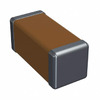 1808CC153MAT3A
1808CC153MAT3A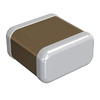 GRM0336S1E750JD01D
GRM0336S1E750JD01D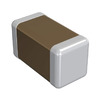 GRM1557U1H820JZ01D
GRM1557U1H820JZ01D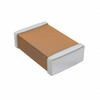 CL10B683KA85PNC
CL10B683KA85PNC THJD226M035RJN
THJD226M035RJN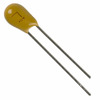 TAP336M010SRW
TAP336M010SRW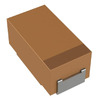 TPSC335K035H0700
TPSC335K035H0700 ICS9LPRS419DFLFT
ICS9LPRS419DFLFT
- IS61WV102416ALL-20TLI
- MK50DX128CMC7
- MCIMX502CVM8B
- MAX3320BEAP
- X40421V14-CT1
- AS1359-BTTT-33
- SCA103T-D05-1
- LA6242H-TRM-E
- NC7SZ74L8X
- S29GL512T10FHI013
- TL7770-12CDWR
- T491B335K016AT7126
- XC5VLX110-2FFG676I
- XA3S1000-4FGG456I
- CIC21J600NE
- T491B336K010AT4539
- LM95231CIMM/NOPB
- H5DU2562GTR-E3C
- BQ2057CTS-TR
- EPF10K130EQI240-1N
- IRS20124STR
- ISPLSI2096-80LT
- MM9616-VJG
- PMB27251F
- TA7358APG
- GT48300-B-1
- LA9702WL-MPB
- LV4122W-TBM
- MDIC02-2BG
- THGBM5GA1JBAIR
- TAJD226M035R
- TAP106K050CRW
- R5F212ACSN08FA
- W949D2KBJX5I
- BCM45308KFSB2
- CLK5610V-01T48I
- 215LKBAKA14FGS
- FV2-P4
- DF52-4S-0.8H